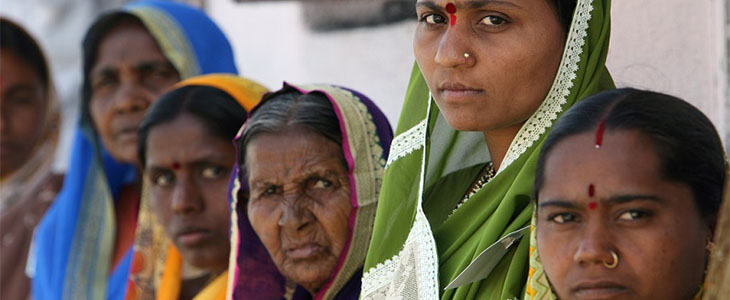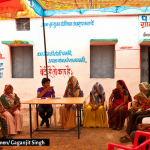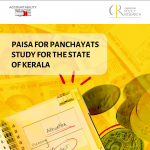
Information and Anger
2 October 2016
Several research institutions and think tanks in India track expenditure. They tell us that budgets were laid down for this and that, they speak of estimates and revised estimates, they speak of expenditure, they cut that into slivers of capital and revenue expenditure, they write about balances, and discuss opening and closing balances. There are graphs in the main reports and tables, with twenty columns of dense data in tiny font, in the annexes. Typically, the font in which the source is mentioned, is tinier than the ones used for the numbers.
These reports do not do the one thing that they are intended to do. They do not make you angry and seek change.
The other day, an officer in the government, a close friend of mine, told me the story of women and child welfare programmes in the State of Karnataka. We, from Accountability Initiative had gone to meet her, to discuss in what ways the Panchayats could become central to the implementation of programmes for the welfare of women and children in the State. It was a revelation.
The officer explained that her first priority is the fact that the number of missing women – a phrase she used to describe women who die in delivery and the girl children that are not allowed to be born – is about 8 lakhs at any given time. She said that the government’s blunt instrument to solve the problem was to promote institutional delivery, which is to insist that women delivered their babies in hospitals. Karnataka had largely achieved this objective; institutional deliveries had now touched 90 percent of all deliveries in the State.
However, to keep track of women who had conceived, there was a system of registration for them. Those registered were given prenatal care. However, only 75 percent of those who had conceived were so registered. That meant that only 75 percent of women were receiving various supplements, including folic supplements. 25 percent of women were not receiving any such supplements, even though they were eventually landing up – at least a large proportion of them – in hospitals, to deliver babies.
Then, did the women who deliver babies, even in hospitals, live?
No, the situation is not good at all, she said. Maternal mortality in the State is at 133 deaths per thousand. Karnataka is the worst off State in South India, the only state to have its Maternal Mortality in three digits. Infant mortality is 28 deaths per thousand. In comparison, Tamilnadu’s infant mortality is 21 deaths per thousand, while Andhra Pradesh is at a high 35 deaths per thousand.
So, I responded, mothers die in more numbers and children die, right?
Well, she said, that’s because there is rampant child marriage in Karnataka. Young girls, suffering from nutritional deficiency get married, pregnant, suffer from more nutritional deficiency during pregnancy. They die, even if they die in hospitals. Besides, she said, while infant mortality is at 28 deaths per thousand, the mortality rates of children under five is 32 (against the Indian average of 42 deaths per thousand). So many of the children who survive their births, don’t live to see their fifth birthdays.
She then pointed out the results of the Fourth National Family Health Survey, 2015-16. According to this report, child stunting in Karnataka has come down from 47 percent in the previous survey to 36 percent. However, the percentage of underweight children had come down only marginally. What’s worse, wasting away of adults and children had gone up by 9 percent. Karnataka had a large number of low birth weight children, with Raichur and Bagalkot districts being the worst off.
As I sat quiet, ruminating over the graphic picture she painted of the situation on the ground, she interrupted my thoughts softly. ‘I spoke the other day to the Deputy Commissioner of …. District. It is an irrigated district’, she said. ‘He said he had not seen a single woman in the district during all his visits to villages, who is not stunted or underweight.’
‘What can the Panchayats do?’ I broke the silence.
There are 25000 severely malnourished children in Karnataka, described to be in the stages of Grade 3 and 4 levels of malnutrition. Children who are in the grade 4 stage are so weak that they cannot feed on their own, and they must be admitted to hospital.
25000. Enough children to fill a decent sized football stadium.
Protecting these children could be the responsibility of the Panchayats, she said. For one thing, the Panchayats can build toilets in the Anganwadi (crèche) buildings and provide facilities for clean drinking water to them. There are 64500 Anganwadis in Karnataka and a further 1400 will be added to that soon, she said. Open defecation is highly correlated to infant mortality. Children catch stomach infections, suffer from low grade fever. One thing leads to another and soon, they languish and die.
Under the National Rural Employment Guarantee Programme, land could be donated and prepared for the building of Anganwadis. Only 40000 Anganwadis had their own buildings. Amongst those too, there are many who do not have kitchen sheds. We do not have full details, but can get them quickly and share those with you, she said.
‘But does not the government have money to spend on these urgent necessities?’ I asked.
The Government spends Rs. 1300 crore annually she said, for Anganwadis that reach out to provide care and nutrition to 58 lakh children.
That’s less than the money the government was planning to spend on a steel flyover to reach Bangalore airport, I thought.
As I listened, my friend spoke passionately of what more the Panchayats could do. The nutritional practices are all wrong, she said. Children are getting more than 25 percent of their recommended share of sugar. Not only is that bad for them, but Sugar is also full of sulphur, due to bad refining practices. They get milk as well now; under the Ksheera Bhagya scheme, 50 grams of dehydrated milk powder is given to children every day. The Women and Child Welfare Department has no ability to undertake quality checks on the material supplied. Mother’s committees at the Anganwadi level don’t work, they need to be activated. Panchayats could undertake regular social audits of Anganwadis. They could check on all these aspects of Anganwadi functioning, she said.
There are other ways in which the Panchayats could work on women and child related issues. There are a large number of abandoned or surrendered babies, due to teenage pregnancies that are not aborted. The Panchayats could keep track of abandoned babies.
Even as I grappled with the information she was giving, my friend waved her phone at me. She had already created a WatsApp group of her officers and staff, and they were sending in details of the good practices seen on the ground. ‘The Panchayats are already doing many of these things,’ she told me. ‘My suggestions are drawn only from what I’ve seen on the ground’. She showed me pictures of Bettegeri panchayat, where the Panchayats had helped Anganwadi workers to grow vegetables in bottles and also set up a donation system for supplementary nutrition through putting a basket at the gate of every Anganwadi. Panchayats were donating clothes, as well.
She ended by reflecting that education starts with health, it does not start with education. She pointed out what the Nobel Prize Winner, James Heckman had said; that of every dollar spent by the government, the highest return is obtained on what is spent during early childhood. The child’s critical brain development happens in the first 1000 days of the child including the time spent in the womb. Keeping a child well fed and healthy improves educational outcomes later on. If children have immunity, they do not miss school. Their incomes in future are impacted positively, immeasurably. She spoke of the new programme that the Government was planning to start; a pilot programme in 4 taluks of the State, to ensure that the inter-generational cycle of malnutrition is broken. A thousand day programme. She said that the Panchayats must monitor these programmes.
I looked at my watch as I left. I had spent just over an hour with my friend.
I was angry. Seriously angry.





